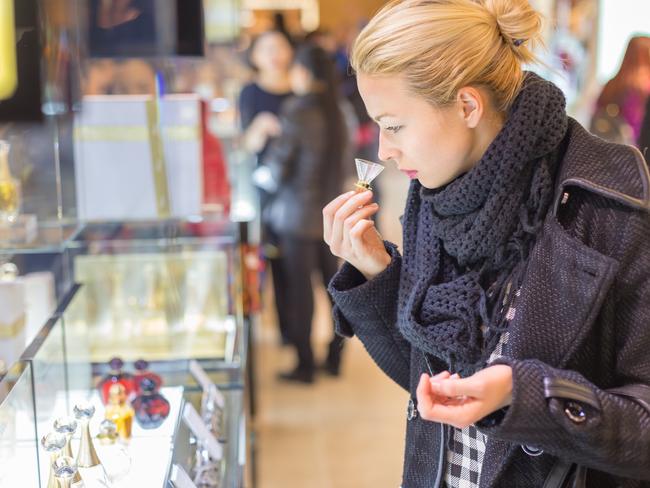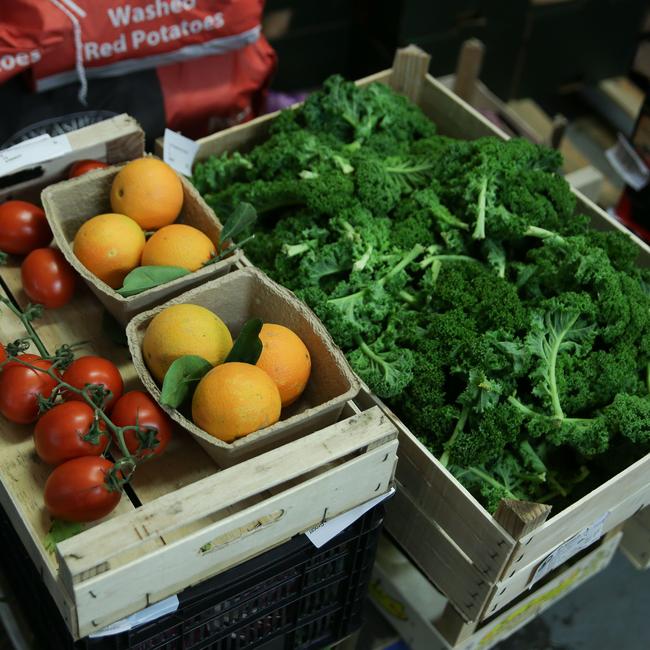Talking Point: Retail therapy after lockdown
Shopping is different but still satisfying — for us and for retailers, says Louise Grimmer

Opinion
Don't miss out on the headlines from Opinion. Followed categories will be added to My News.
AS we start to emerge from lockdown and re-engage with those activities we enjoyed before COVID-19, what will shopping look like?
Many people are desperate to get back into stores, and retailers are waiting to welcome them with open arms — but the shopping experience has changed.
Here are five ways the pandemic will change the way we shop now and in the future:
IS ONLINE THE NEW NORMAL?
With most bricks and mortar stores closing their doors at the height of the pandemic, shoppers headed online.
Some retailers were caught off-guard and were forced very quickly to set up online sales or improve their digital stores.
Previously, the appetite for online shopping in Australia was lukewarm at best. Online only accounted for about 8 to 10 per cent of retail sales and, for grocery sales, online represented about 3 per cent.
Many people were reluctant to shop online, and many small retailers did not see the value in providing a digital offering.
All that has changed. March and April saw a surge in online shopping as people settled at home for the long haul and invested in office equipment, home decor, electronics, home gyms, DIY and gardening products. Australia Post went into overdrive and reported delivering more than two million parcels every day.
SUPPORT FOR LOCALS
Pleasingly, many local retailers report strong sales despite having to rely on online selling only. More people are recognising the importance of their local shops, services, cafes, bars and restaurants — especially small, independent neighbourhood businesses that bring locals together — and the way these businesses contribute to the fabric and vibrancy of our neighbourhoods.
Demand has increased for locally grown and produced products, particularly fresh produce, because people are concerned with where food comes from. More of us are cooking at home and trying our hand at growing our own food.

What has been really interesting for me is the role of the internet in allowing consumers to support local businesses. Previously there was a perceived zero-sum game that pitted physical against online shopping. But it is retailers’ online stores that are allowing them to continue trading and connecting with existing and new customers. Online is the saviour of many bricks and mortar businesses.
KEEP YOUR DISTANCE
Stores have been busy implementing strict hygiene protocols, including intensive cleaning, availability of hand sanitiser, sneeze guards and other Perspex barriers, and helping maintain distancing, especially in queues.
Testing cosmetics, spraying perfumes and touching and feeling products will be limited.
Some stores have closed fitting rooms and are actively discouraging customers from picking up products then putting goods back on the shelf.
Click and collect, contactless home delivery and kerbside pick-up have risen sharply as stores ramped up these services to reduce face-to-face contact.
MAKE AN APPOINTMENT
Navigating your way through a crowded store will be a thing of the past as stores drastically limit the number of shoppers allowed at one time.
Making a booking will no longer just be a part of eating out or getting a haircut. Now, if you want to try on clothes, have glasses or a suit fitted, you’ll need to make an appointment. Managing close contact activities will be challenging for retailers as they seek to allay people’s health concerns and fears around social distancing.
RIGHT-SIZE STORES
The retail industry was under pressure before the virus struck. Scores of well-known retailers shut up shop in 2018 and 2019. Retailers of all sizes face incredible challenges, amplified by lack of consumer confidence, job losses and a flat economy, and not all will survive. Last week Wesfarmers announced it would close or rebrand (as Kmart) 167 of 284 Target stores. For quite some time there has not been room in the Australian retail industry for three discount department stores, and this decision by Wesfarmers had been expected for some time.
Sadly, it is likely the first of many similar announcements by large retail brands as they seek to minimise financial exposure and look to consolidate their portfolios by closing unprofitable stores.
Consumers and employees in rural and regional Australia will be most affected by these changes.
The shopping experience has completely changed as a result of COVID-19.
Online shopping will continue to grow, large national chains will seek to right-size their fleets of stores, some retailers may opt to trade only online and close physical stores. Shopping centres and malls will see store vacancies rise. Small and independent retailers which are more nimble than larger competitors will more easily navigate the changing retail landscape.
While some consumers will remain reluctant to venture out, many shoppers will seek to get back into stores for some much-needed retail therapy.
Significant numbers of Australians have lost their jobs, or had their working hours reduced, and this has an impact on their ability to spend.
The best thing we can do as consumers, depending on our financial ability, is to support local retailers, producers and makers whenever possible, in-store or online. This will help ensure Tasmanian businesses have the best chance of surviving the radical changes that COVID-19 has brought to our community.
Dr Louise Grimmer is a retail marketing expert at the University of Tasmania.
On Thursday, May 28, as part of the university’s “Island of Ideas” online public lecture series, Dr Grimmer will present “Rise and fall: A brief history of the department store” at 3pm. Free registration is available via https://www.utas.edu.au/events


